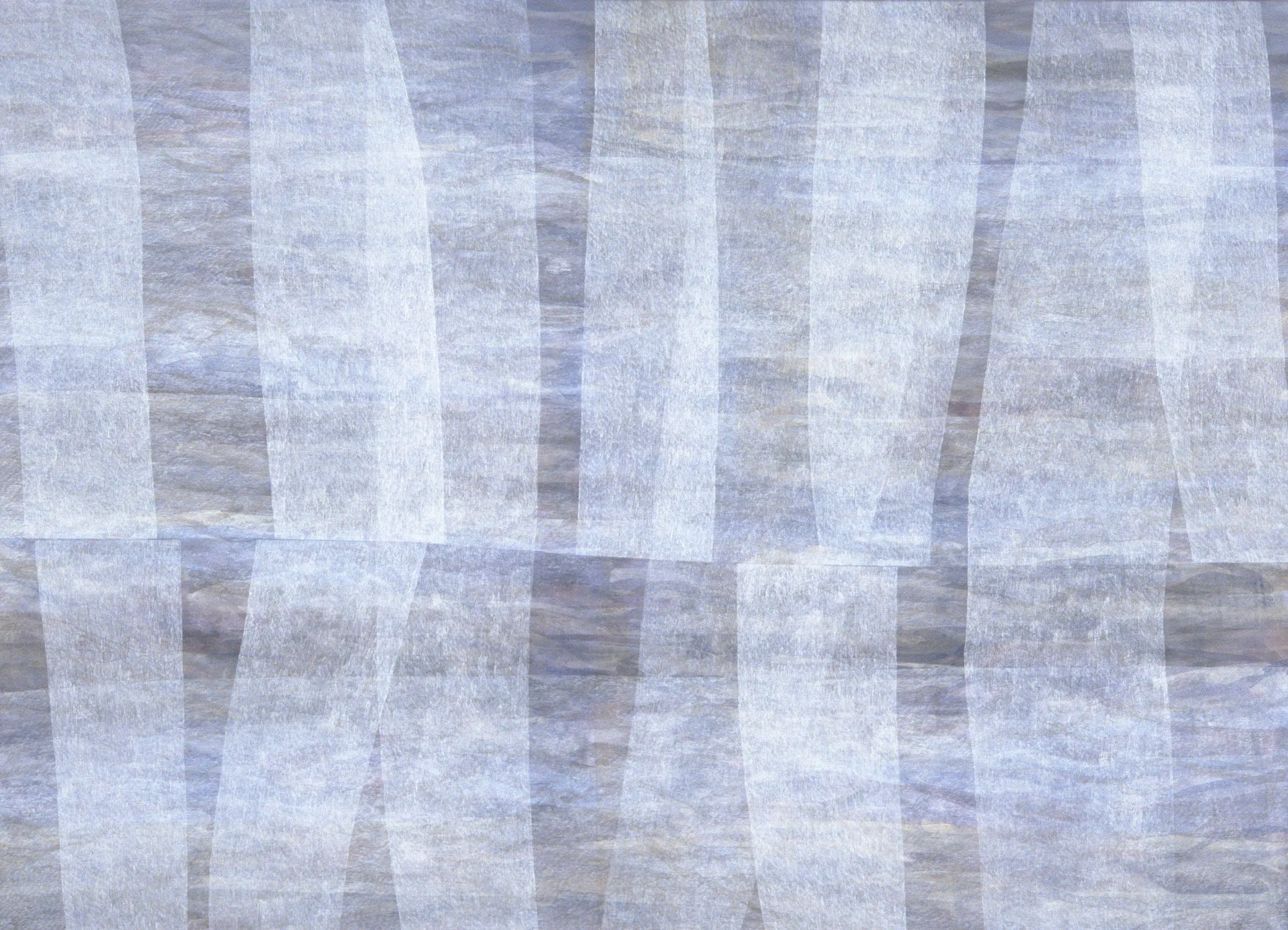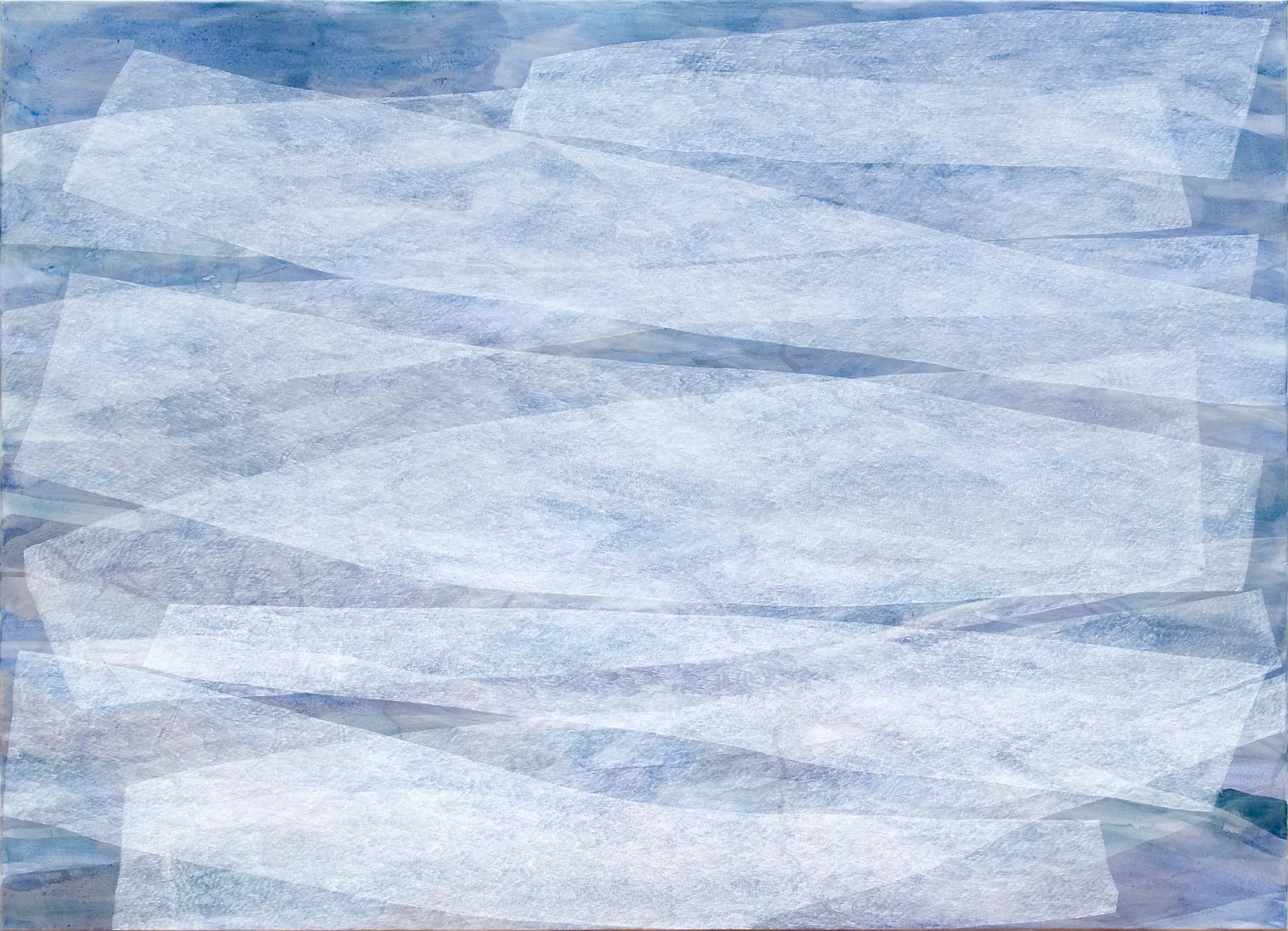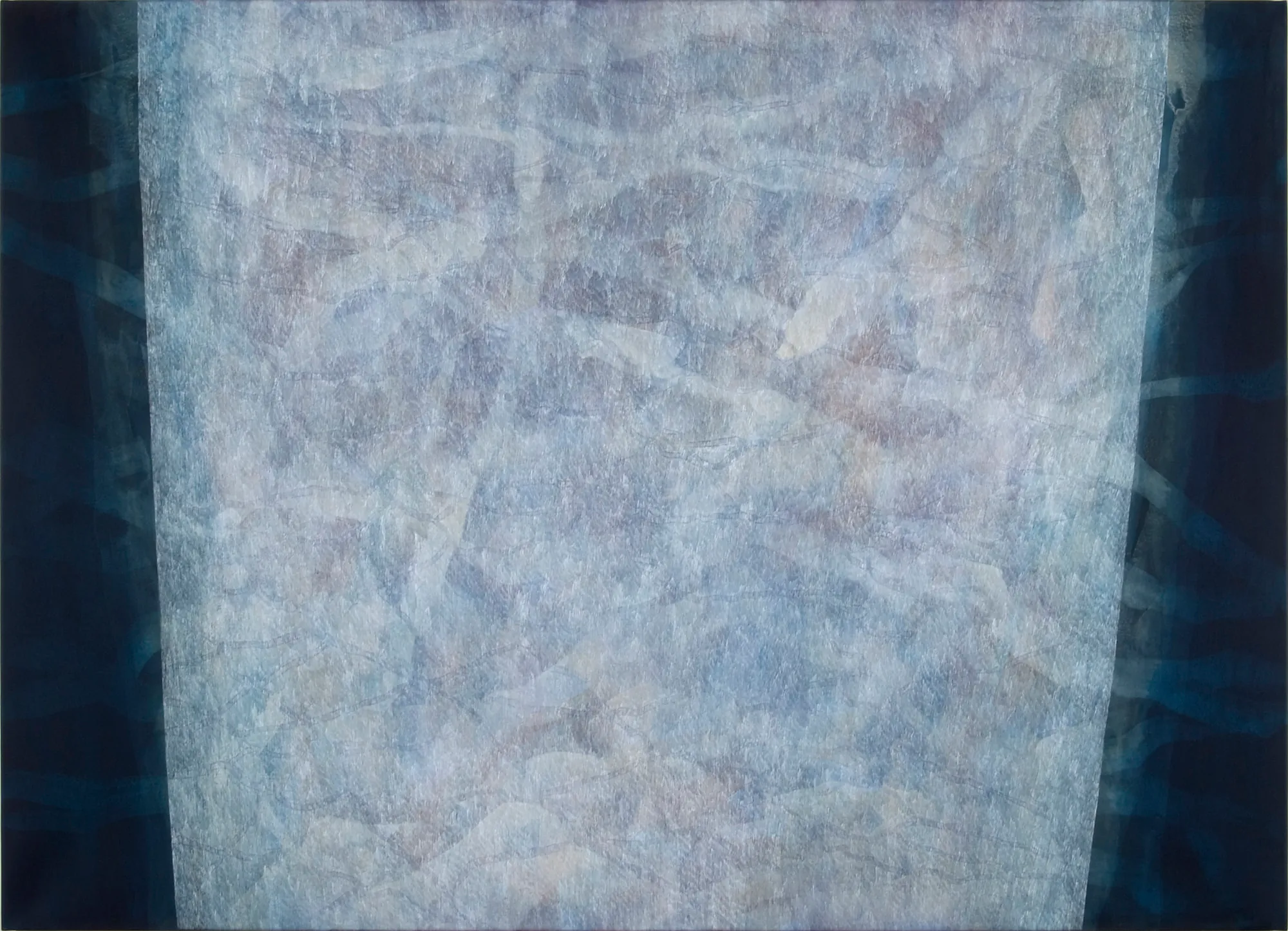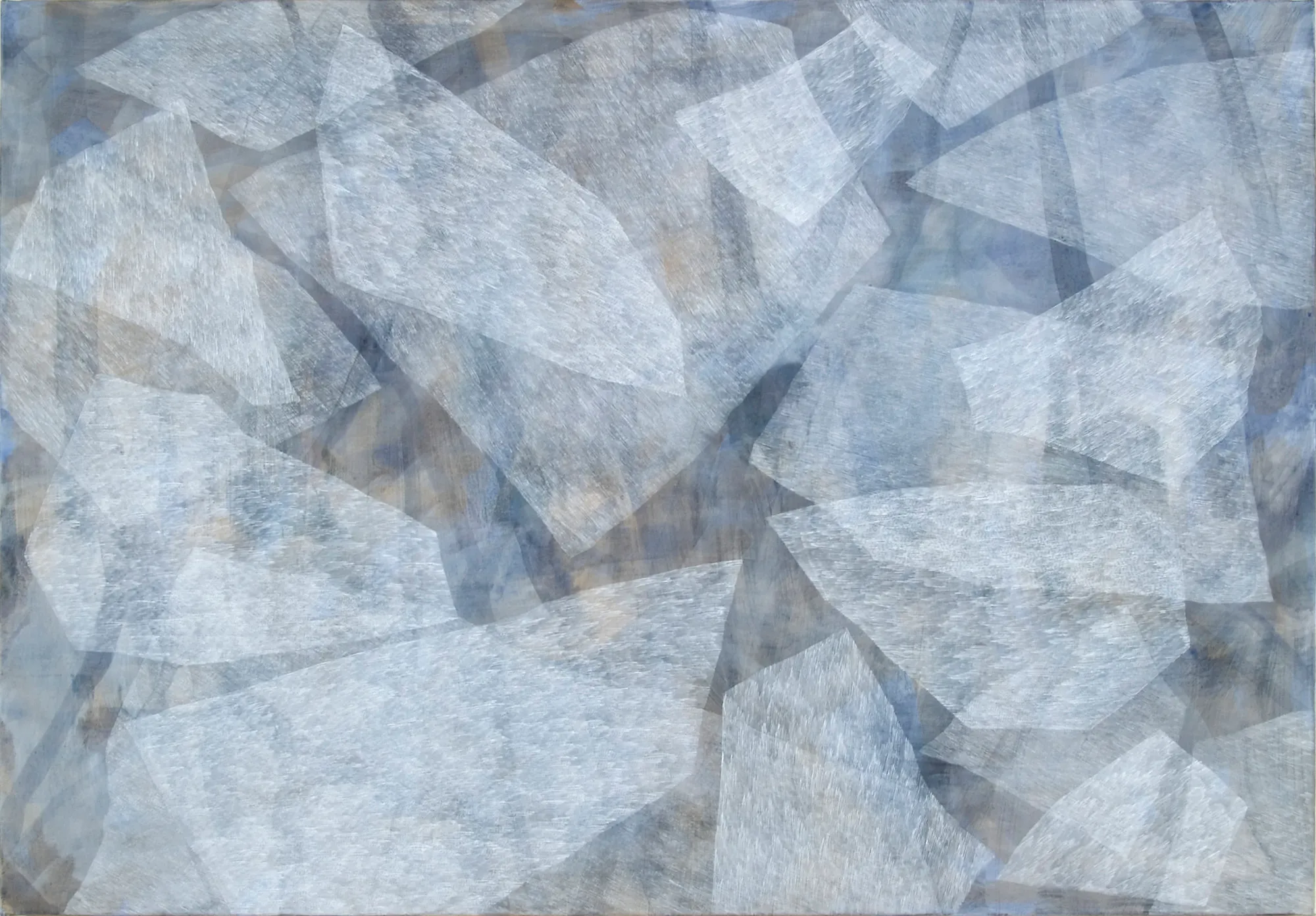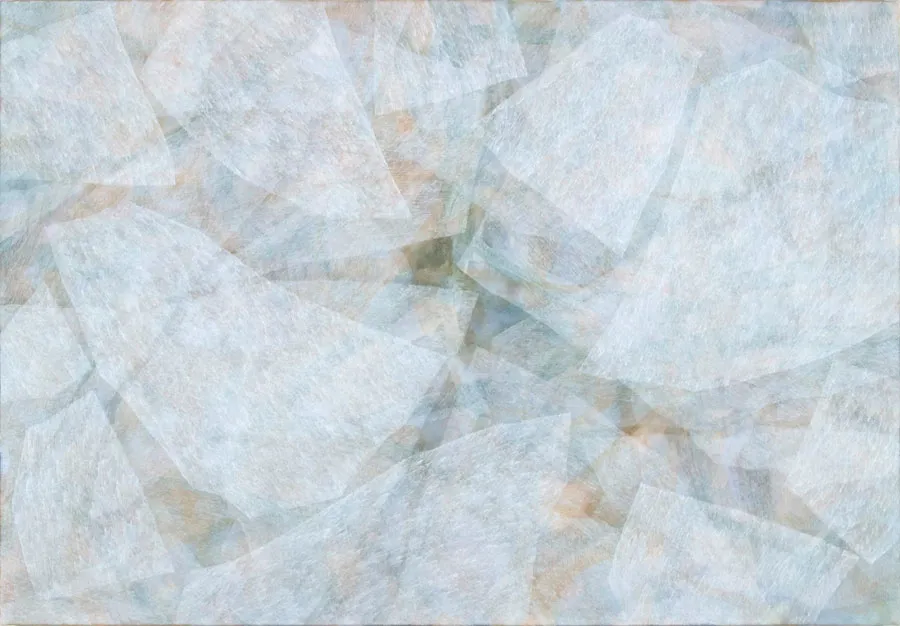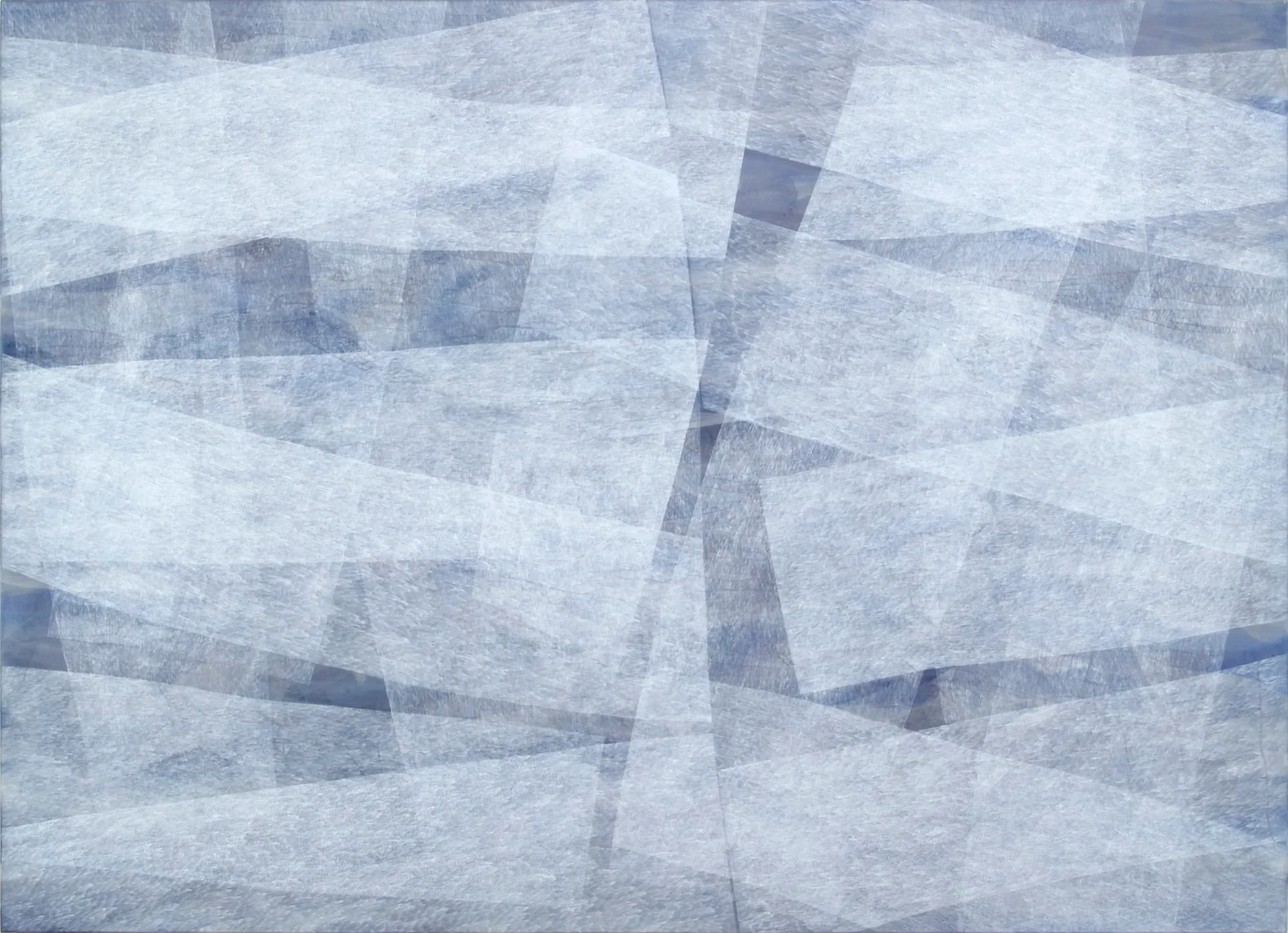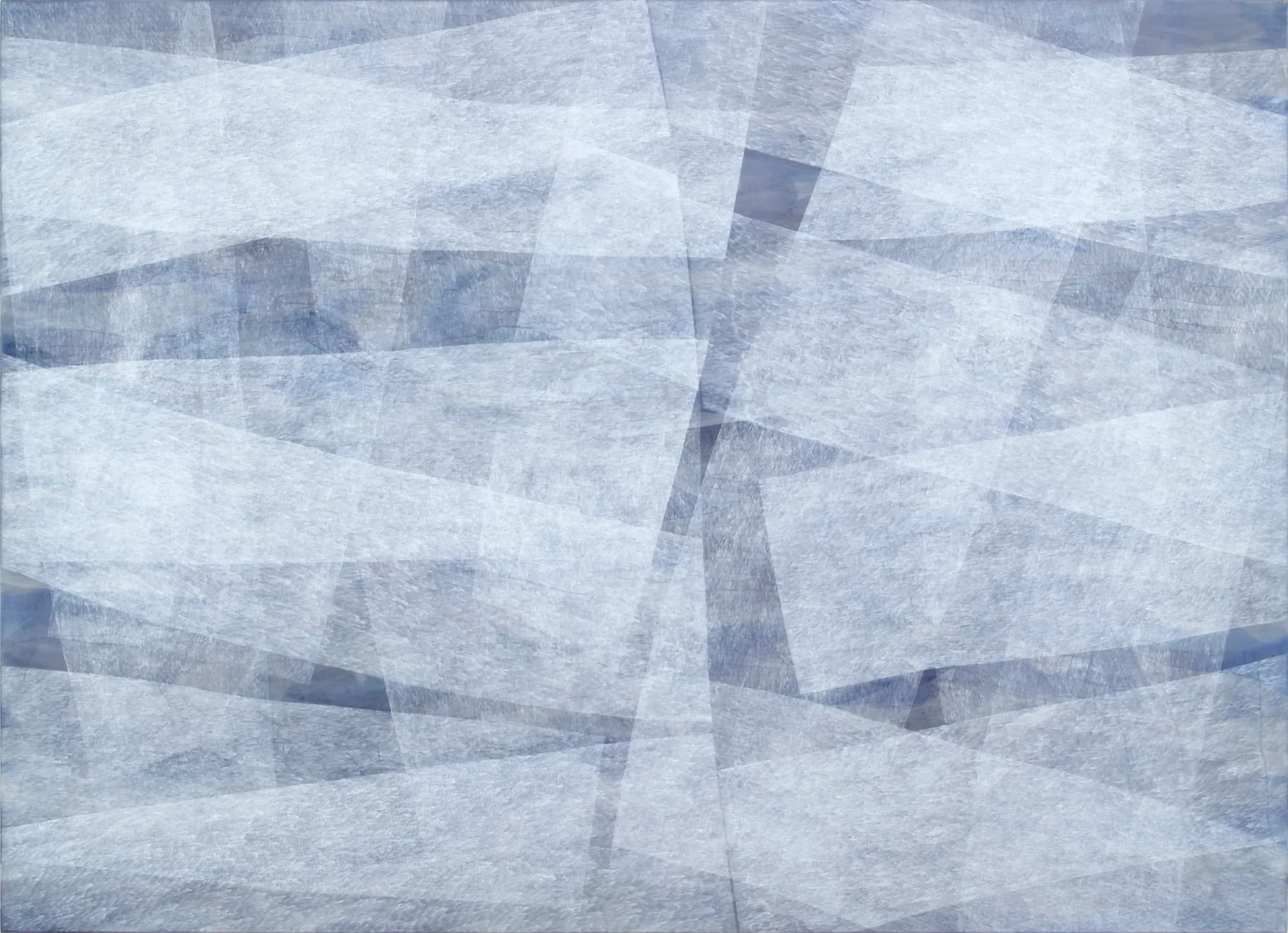
Vanishing
1 Jan 2005 – 31 Dec 2006
In February 2004 I had the opportunity to travel aboard the RSV Aurora Australis, to the Antarctic continent. I was looking for an experience of a minimal white landscape, to find out what it was really like to be completely surrounded by and lose oneself in the empty whiteness of air and ice. There were moments when I sensed this emptiness, but the part of the trip that I responded to the most was the three to four day period on the ship between crossing the Antarctic convergence, (the mobile interface where the cold Antarctic seas meet and mix with the warmer Pacific, Atlantic and Indian oceans) and arriving at the dense pack ice of the Petersen Bank near Casey. It is a zone that is in a constant state of transformation, half the year it is frozen solid while the rest of the time it fluctuates between various stages of freezing, cracking, melting and refreezing. As the temperature begins to drop the ocean is flecked with patches of newly forming ice – circles of pancake ice and nilas, thin sheets of ice, which break and repeatedly refreeze creating a fractured film of ice fingers across the surface. The eerie light, called ice blink, - a phenomena of light reflecting off the surface of the ice illuminating the horizon, and icebergs glowing white in the distance like lost jewels, create a strange and bizarre landscape which is hard to comprehend. It appeared to me as a fragile and delicate environment quite contrary to the commonly held perceptions of the dramatic and monumental landscape documented by explorers. There is a profound stillness in the ice, a cold so intense as to seemingly halt all motion.
In my paintings I have tried to recreate the elusive and transient phenomena of the sea ice, the endless cycle of melting, cracking and refreezing, combined with a personal desire for a symbolic return to an immense whiteness.
